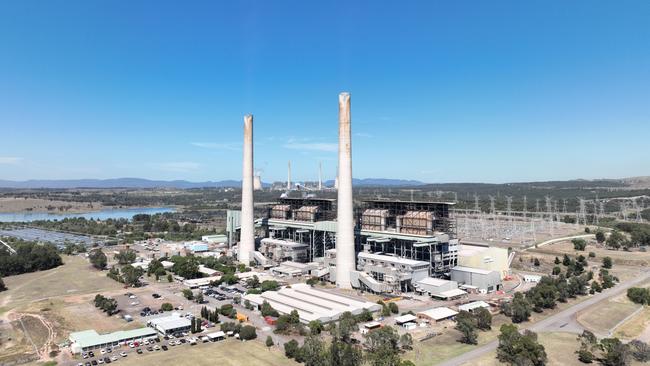AGL plots mega renewable energy development as transition plans accelerate
AGL has finalised plans to construct a 2GW renewable energy development as its transition plans accelerate.
AGL Energy has earmarked a site midway between Sydney and Adelaide to provide nearly 20 per cent of renewables it needs to complete its energy transition, marking its biggest move in green energy since billionaire Mike Cannon-Brookes became its largest shareholder.
Australia’s second largest electricity and gas retailer and Someva Renewables have concluded plans for Pottinger Energy Park, located 60km south of Hay and 75km north of Deniliquin in NSW.
The venture is expected to consist of a 1.2GW wind farm, 300MW solar farm, and a 500MW/2000MW hour battery energy storage system. The development is located within the NSW government’s South West renewable energy zone.
AGL did not provide details on how much it expects the project will cost. AGL said once its development plans are approved, construction on the Pottinger Energy Park could commence in 2026.
At around 2GW, Pottinger would be 20 per cent of the 12GW AGL said it would need to develop by 2036 to replace its coal fleet, a decarbonisation plan which will reshape Australia’s largest polluter and aid the country’s net zero by 2050 ambitions.
The pace of the power giant’s move to green energy was highly contested after the arrival of Mr Cannon-Brookes as its largest shareholder, with the climate activist spearheading a charge for AGL to fast-track a move away from fossil fuels.
Still, it faces a difficult environment to deliver on its ambitions. Some communities are fighting back against a string of giant transmission projects needed to deliver renewables while projects themselves are increasingly being waylaid by regulatory hurdles and permitting delays.
AGL’s chief operating officer, Markus Brokhof, said the Pottinger Energy Park development marked a hastening of the company’s plans.
“We are exploring the development of a significant wind, solar and battery project at the Pottinger Energy Park as we seek to accelerate options to develop projects that will contribute to our ambition of adding 12GW of new renewable generation and firming capacity to our portfolio by the end of 2035,” said Mr Brokhof.
“As we progress our plans in partnership with Someva, we will engage regularly with the local community, traditional owners, and business and environmental groups to understand their feedback to assist us to develop a project that will benefit the region.”
The development plan provides more clarity to investors about how it will meet its transition targets unveiled in 2022.
AGL in 2022 unveiled its transition plan as it committed to an early closure of Australia’s biggest-emitting power plant a decade earlier than planned.
AGL said it needed about 6.5GW of renewable projects, predominantly utility-scale solar and wind schemes. The rest of the 12GW will be met through firming generation such as batteries and pumped hydro.

The plan received support from AGL investors but the company is under pressure to push ahead.
AGL has so far committed to several large-scale batteries, led by the development at the now-retired Liddell coal power station, but the company’s largest shareholder — tech billionaire Mike Cannon-Brookes — continues to advocate for a more ambitious plan.
Still, with AGL’s plan to close Loy Yang A — Victoria’s largest coal power station — in 2035 and Bayswater between 2030 and 2033, Australia’s once-dominant coal power stations will be mothballed by 2035.
The Loy Yang A power station is one of Victoria’s youngest coal-fired power plants, with a capacity of 2.2GW, but is responsible for about 30 per cent of the state’s total emissions.
While many have cheered AGL’s strategy, the broad movement away from fossil fuels has stoked concerns about energy security and stability amid delays in building enough renewable energy to replace coal.
But Someva Renewables’ managing Director, Jamie Chivers, said the Pottinger Energy Park could play an important role in NSW’s energy transition by providing reliable renewable energy for up to 830,000 NSW homes, while also delivering an economic boost to the Riverina,
“We’ve been buoyed by the support the Pottinger Energy Park has received from local
landowners, traditional owners, local businesses, local councils and the broader community,” said Mr Chivers.






To join the conversation, please log in. Don't have an account? Register
Join the conversation, you are commenting as Logout